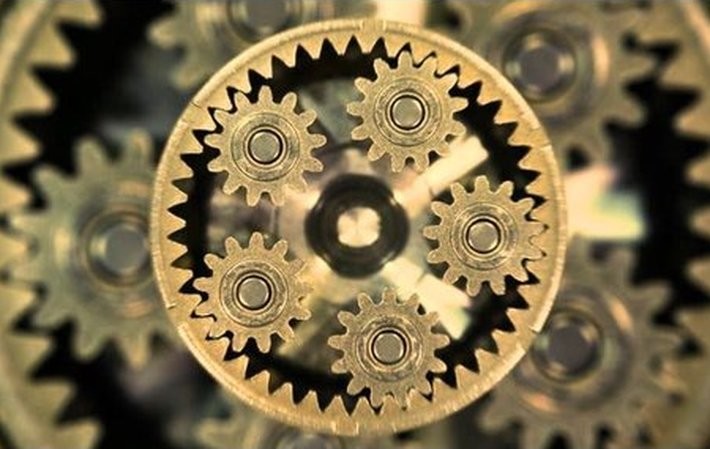
Published on 12/08/2016 | Strategy
The Industrial internet is a transformation journey of how digital technology will re-shape the manufacturing Industry also well known as Industry 4.0 for creation of “smart factory” as defined by the German Government.
The Industrial Internet of Things is the use of IoT technologies (machine-to-machine communication, automation, sensor data analytics) in manufacturing with focus on improved business decision making and reduce inefficiencies. According to a report from Accenture, the IIoT could add $14.2 trillion to the GDP of 20 major world economies by 2030.
Marco Annunziata has defined Industrial internet as three key elements 1. Intelligent Machines connecting the world’s machines, fleets, facilities and networks with advanced controls, sensors and software applications 2. Advanced analytics, combining the power of physics-based analytics, domain expertise, automation and predictive algorithms for understanding the operation of machines and systems 3. Connecting people in real time for supporting operations, maintenance, high service quality and safety.
However, integration of Industrial environment to IoT is more complicated than a normal M2M and connected devices, as there is a need to upgrade legacy devices with propriety closed and older protocols of communication that are not connected to an IIOT ecosystem, at the same time implement new technologies. Market data firm IDC estimates that 85% of existing installed devices and sensors are in use but not necessarily able to connect to the Internet and share data with the cloud i.e. not IIoT ready. The Industry challenge is to integrate legacy systems with modern industrial networks, overcome this communication gap and take advantage of the efficiency and profitability that IIoT offers.
There needs to be seamless communication between devices regardless of the manufacturer, various operating systems, protocol standards and connectivity frameworks to avoid fragmentation and foster interoperability, which is work in progress today and still long way to go. The Industry requires collaboration efforts to create a ubiquitous IIoT interoperability standard, so standardization plays a key role in achieving this.
At present, there can be seen an ecosystem competition in which several players are creating IoT standards in common consortiums and alliances. Companies have formed groups for advocating their solutions as no one company can realize the IoT in silos. Several standardization bodies are involved in the collaborative effort for solutions development activities within individual Standard Development Organisations, Consortia, Alliances and Industrial partners. The goal to establish a foundation to define and implement solutions for interoperability that help make smart factories and IIoT possible.
- GE and Bosch have joined forces to make their Internet of Things (IoT) platforms interoperable and reduce fragmentation and grow their ecosystems around an open source-based technical IoT platform.
- The Industrial Internet Consortium (IIC) is an open membership organization, setting the standards, best practices and processes of the Industrial Internet
- Huawei collaboration with GE to develop solutions for the industrial internet of things. GEs Predix ìs an industrial operating system for building applications that connect to industrial assets, collect and analyze data, and report in real time.
- Microsoft-GE partnership to bring IoT Azure Cloud Services To Industrial Tasks and create a bridge between IT and operating technologies
- The Open Connectivity Foundation (OCF) originally The Open Interconnect Consortium (OIC) is an industry group whose stated mission is to develop standards and certification for devices involved in the Internet of Things (IoT) based around Constrained Application Protocol (CoAP) for industrial connectivity standards organizations, including in its membership are Samsung Electronics, Intel, Microsoft, Qualcomm and Electrolux.
Tech giants Cisco and IBM have collaborated for improved IOT deployment using Cisco`s networking knowledge and edge devices along with IBM Watson IOT solutions.
In my opinion, Tech giants and major Telecom players that are spearheading the standardization effort would have a competitive advantage for their own strategic business goals to benefit their own product portfolios and may lead to a catchy situation in the future.
If some bigger companies have their development plans to create their own closed IIOT ecosystems due to their scalability and financial capabilities, they should make efforts to align with global industry roadmap, to avoid fragmentation and involve in open source innovation / collaboration.
All companies in various industrial sectors should engage in some level in this standardization process, as this will help them plan on upgradation and implementation of IIoT solutions at early stages . I believe, some onus should lie with the key multinationals and various consortia to get the smaller companies along and keep them informed.
We see a clear paradigm shift within various industrial sectors and equipment manufacturer in the adoption of IIOT technology (including legacy equipment) which will drive the global connectivity, communication of Intelligent Industrial products. Industrial IoT field in its infancy stage still fragmented the need of the hour is encourage the collaboration with global industrial partners for open source initiatives. Standardization would be important for success IIoT implementation by reducing fragmentation and enabling interoperability.
However, it will take some more years until we form and implement the Industry wide universal standards for increase the Return-on-Investment (ROI) and benefits from operational efficiency. Only time will decide who will be the big game changers and seize the biggest opportunity of the Industrial IOT.
Note: The views expressed in this article are my own.
This article was originally posted on LinkedIn.